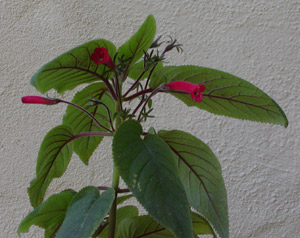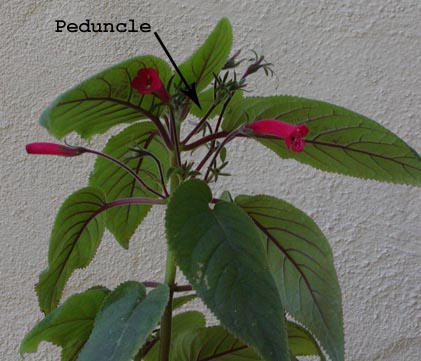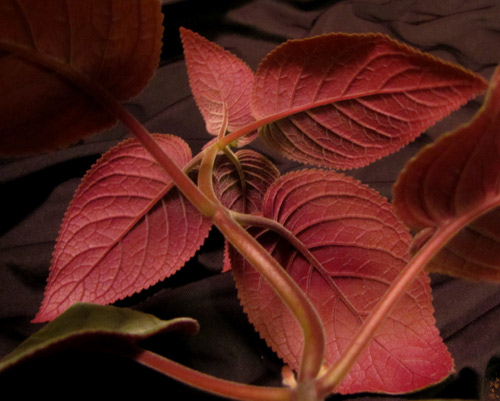Sinningia reitzii is a fine species from southern Brazil. It normally has perennial stems persisting from one year to the next, even though it also makes a substantial tuber. It flowers from the leaf axils, on peduncles usually bearing many flowers. The flowers are red, sometimes shaded toward magenta.
The seedlings of this species are particularly attractive. The leaves are dark green with a herringbone white pattern down the midrib. The backs of the leaves are dark red.
This pattern usually fades in the mature plant. Depending on how much light the plant is getting, the leafbacks may lose most of their red, but will retain the color along the midribs, as in the picture above.
Sinningia reitzii


